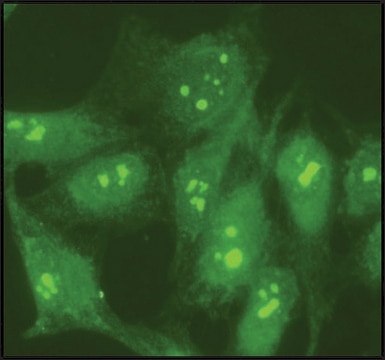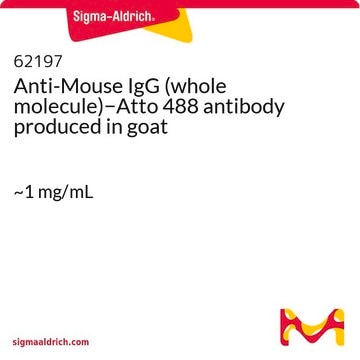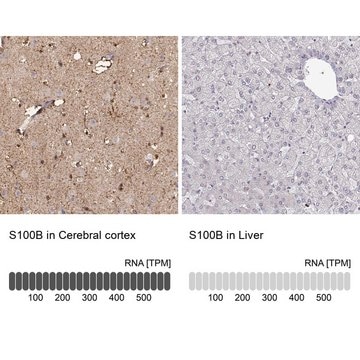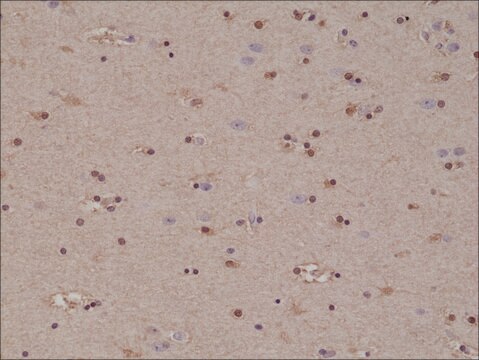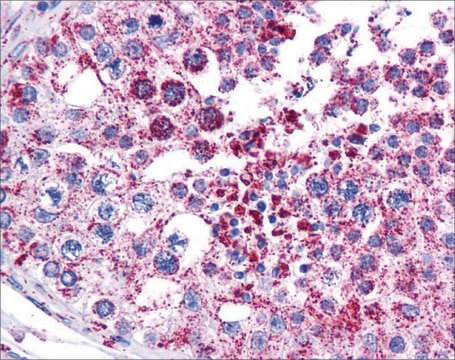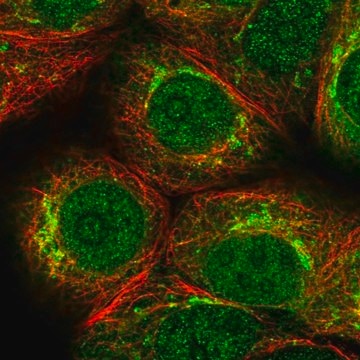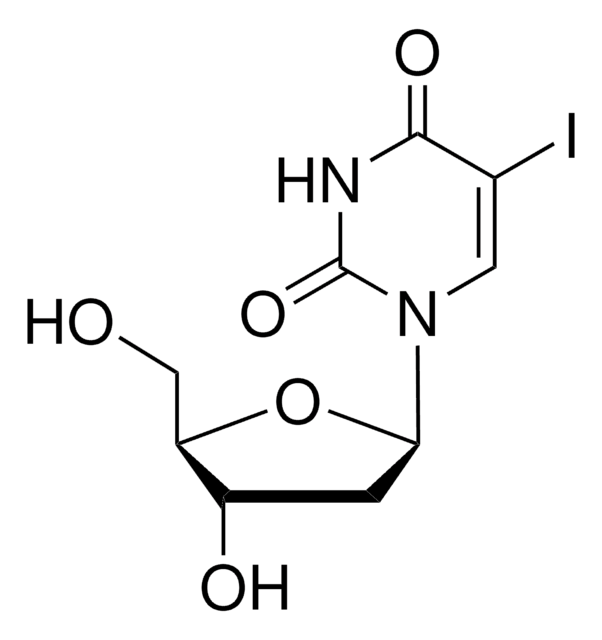N6288
Anti-Nucleolin−Atto 488 antibody produced in rabbit
1.5-3.0 mg/mL, affinity isolated antibody, buffered aqueous solution
Synonym(s):
Anti-NCL, Protein C23
About This Item
Recommended Products
biological source
rabbit
Quality Level
conjugate
Atto 488 conjugate
antibody form
affinity isolated antibody
antibody product type
primary antibodies
clone
polyclonal
form
buffered aqueous solution
species reactivity
human, mouse, rat
storage condition
protect from light
concentration
1.5-3.0 mg/mL
technique(s)
direct immunofluorescence: 0.5-1.0 μg/mL using human HeLa, rat NRK and mouse 3T3 cells
fluorescence
λex 500 nm; λem 522 nm in PBS
λex 500 nm; λem 522 nm
UniProt accession no.
shipped in
dry ice
storage temp.
−20°C
target post-translational modification
unmodified
Gene Information
human ... NCL(4691)
mouse ... Ncl(17975)
rat ... Ncl(25135)
General description
Find more information here
Specificity
Immunogen
Application
Biochem/physiol Actions
Physical form
Storage and Stability
Disclaimer
Not finding the right product?
Try our Product Selector Tool.
related product
wgk_germany
WGK 2
flash_point_f
Not applicable
flash_point_c
Not applicable
ppe
Eyeshields, Gloves, multi-purpose combination respirator cartridge (US)
Certificates of Analysis (COA)
Search for Certificates of Analysis (COA) by entering the products Lot/Batch Number. Lot and Batch Numbers can be found on a product’s label following the words ‘Lot’ or ‘Batch’.
Already Own This Product?
Find documentation for the products that you have recently purchased in the Document Library.
Articles
Immunoblotting (Western blot transfer) is a common technique in modern proteomics research.
Our team of scientists has experience in all areas of research including Life Science, Material Science, Chemical Synthesis, Chromatography, Analytical and many others.
Contact Technical Service